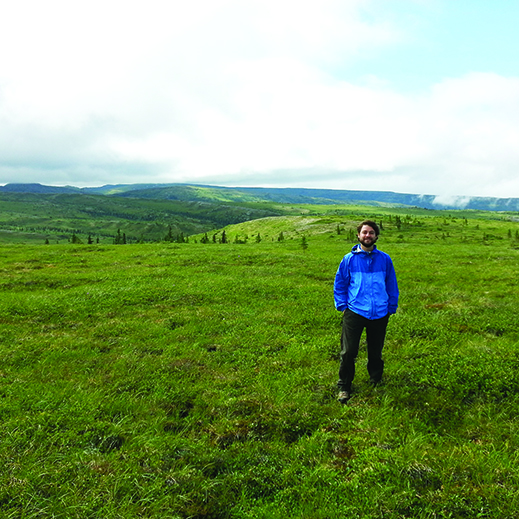As an aspiring rocket scientist, Ben Glass was thrilled to get a Course 16 undergraduate internship at SpaceX, Elon Musk’s spaceflight company. It was, he says, a fantastic experience at a great organization, but his main lesson was less about technology than about himself.

“I realized I’d be a terrible fit at a big company,” he recalls. That realization, and a longtime interest in clean energy, propelled Glass into his current role as cofounder, CEO, and CTO of Altaeros Energies, a four-year-old startup based in Somerville, Massachusetts, seeking to commercialize airborne wind turbines that can bring steady, economical electricity to remote communities and industrial sites. Altaeros’s tethered helium-filled balloon, or aerostat, lifts a turbine as high as 600 meters, tapping into high-altitude winds that are more consistent and stronger than ground-level winds.
“Remote sites usually depend on diesel generators; the power typically costs 30 to 35 cents per kilowatt-hour, and can go over 50 cents,” compared to an on-grid national average of just under 11 cents, explains Glass. “Our first 30-kilowatt product should be extremely competitive at the most remote sites, and we’ll quickly scale to a 200-kilowatt system that will be the lowest-cost option at almost any site using diesel.” The aerostat can also carry telecom equipment, cameras, and other payloads.
Glass first worked in wind power through MIT’s Energy Club and a senior-year turbine array project, and he began mulling the airborne-turbine concept the summer before starting his aero-astro SM program. The idea became a group project in his Sloan School class in energy ventures, where future Altaeros cofounder Adam Rein was a teaching assistant, and their concept went on to win the 2011 ConocoPhillips Energy Prize.
Startup life suits Glass, who juggles engineering, fund-raising, hiring, and dozens of other duties. “Every day is a different job; it’s a blast,” he says. He lives in Somerville and reserves time for cooking, running, and outdoor leisure: “We know Altaeros is a marathon and not a sprint, so we’re pretty good at not burning out.”
Glass draws on his experience on MIT’s solar car team, which allowed participants to “go from conceptualization and design to building, testing, and using what we’d made,” he says. “You learn skills you can’t get in a classroom. I’d encourage everyone to do something like that, and then apply for a job at Altaeros!”
Keep Reading
Most Popular
Large language models can do jaw-dropping things. But nobody knows exactly why.
And that's a problem. Figuring it out is one of the biggest scientific puzzles of our time and a crucial step towards controlling more powerful future models.
How scientists traced a mysterious covid case back to six toilets
When wastewater surveillance turns into a hunt for a single infected individual, the ethics get tricky.
The problem with plug-in hybrids? Their drivers.
Plug-in hybrids are often sold as a transition to EVs, but new data from Europe shows we’re still underestimating the emissions they produce.
Google DeepMind’s new generative model makes Super Mario–like games from scratch
Genie learns how to control games by watching hours and hours of video. It could help train next-gen robots too.
Stay connected
Get the latest updates from
MIT Technology Review
Discover special offers, top stories, upcoming events, and more.